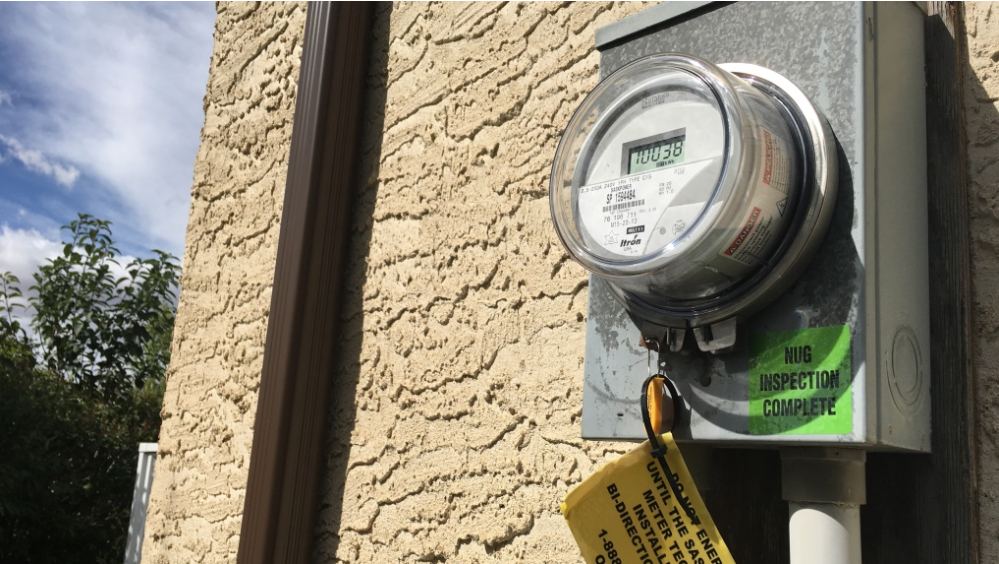PALASH GHOSH
April 21, 2022

Evan Siddall
Alberta Investment Management Corp., Edmonton, returned a net 14.7% in 2021, outperforming its composite benchmark return of 8%.
The firm described the 2021 results as "the strongest year in AIMCo's history" in a news release Wednesday. A spokesman for the company said by email that "14.7% is our highest absolute return at the total fund level."
The firm's total assets amounted to C$168.3 billion ($133.8 billion) at the end of the year.
Over the four- and 10-year periods through Dec. 31, AIMCo delivered annualized net returns of 7.4% and 8.6%, respectively, versus corresponding benchmark returns of 7% and 7.9%, the firm said in the release.
AIMCo noted the investment return information applied to C$138.1 billion of its total assets and excluded C$30.1 billion of assets transferred from the Alberta Teachers' Retirement Fund, Alberta Health Services and the Workers' Compensation Board-Alberta in 2021 that "have not yet met the required conditions for inclusion in AIMCo's value-add as at Dec. 31, 2021."
Within asset classes, private equity was the top performer in 2021, scoring a 65.9% return, the release noted. Public equities (23.4%), infrastructure (19.0%), renewable resources (15.0%), and real estate (14.5%) rounded out the other best performing asset classes. Only money market-fixed income fell into the red, returning -1.1% for the year.
As of Dec. 31, 2021, the fund's asset allocation comprised 37.6% in public equities, 35.0% in money market-fixed income, 13.2% in real estate, 7.7% in infrastructure, 5.9% in private equity and the remainder in renewable resources, based on figures provided in the release.
"Delivering record investment returns is a tremendous accomplishment made possible by our in-house asset management expertise," stated Evan Siddall, chief executive officer, in the release.
AIMCo delivered a net return of 2.5% in 2020, 5.4 percentage points below its benchmark, the firm noted in a separate news release issued on April 15, 2021.
AIMCo invests globally on behalf of 32 pension, endowment and government funds in Alberta.
Alberta Pension Posts Record Year With 66% Private Equity Gain
Layan Odeh
(Bloomberg) -- Alberta Investment Management Corp. earned a record return in 2021 under a new management team, led by stellar gains in equities and infrastructure.
The firm’s return of 14.7%, almost double its benchmark, brought assets under management to C$168.3 billion ($134.6 billion), according to a statement.
Aimco unloaded a number of its private-equity holdings during the year, including a majority stake in sustainability consultancy ERM Group Inc. to KKR & Co. The private equity portfolio made almost 66% in 2021, though it’s a small portion of Aimco’s assets -- C$8.2 billion as of Dec. 31.
Aimco named Evan Siddall as its new chief executive officer a year ago after it lost C$2.1 billion on a bet against market volatility that blew up when the pandemic hit. Aimco invests on behalf of 32 pension, endowment and government funds in Alberta.
The fund earned a 23.4% return in its C$52 billion public stock portfolio, while infrastructure investments returned 19% and real estate made 14.5%. The fixed income portfolio suffered a small loss as rates increased.
The return figures are from Aimco’s Total Fund and exclude about C$30 billion transferred last year from other funds, according to the statement.
AIMCo delivers record 14.7% gain in 2021 as it rebounds from volatility scheme losses
Crown corporation beat its aggregate benchmark of 8% with a record annual 'value-add' of $7.7 billion
Author of the article: Barbara Shecter
Publishing date: Apr 21, 2022

Alberta Investment Management Corporation (AIMCo) has bounced back from a $2-billion loss on a volatility trading scheme in 2020, posting the strongest net return in its history — 14.7 per cent — for the year ended Dec. 31.
The Crown corporation, which manages pension, endowment, and government funds in Alberta, beat its aggregate benchmark of eight per cent, with a record annual “value-add” of $7.7 billion. Client assets under management at the end of the year totalled $168.3 billion.
The annualized total fund return over ten years is 8.6 per cent.
“Delivering record investment returns is a tremendous accomplishment made possible by our in-house asset management expertise,” said Evan Siddall, who took over as AIMCo’s chief executive in July.
Siddall was previously head of the Canada Mortgage and Housing Corporation (CMHC).
James Barber, who joined AIMCo in July and became co-chief investment officer this month, praised the various teams for generating double-digit returns while responding to external risk-management recommendations following the 2020 volatility loss.
“We’ve been driving the car while changing the wheel,” he said, adding that the returns came from new investments rather than the re-valuation of a loss on paper.
“This wasn’t just a bounce back,” Barber said. “I think of the investment team being very astute in a stressful environment and actually being able to lean in and make good, risk-adjusted decisions.”
Sandra Lau, co-CIO, said the fund manager is in a good position to face down rising rates and high inflation through strategies undertaken over the past few years including geographic diversification.
“We have proactively moved to shorter duration assets and increased our allocation to private and real assets,” she said.
“Going forward the environment provides opportunity for a patient long-term investor to continue to increase allocation to illiquid (inflation-sensitive) investments and invest in private credit to further protect against inflation and higher rates.”
AIMCo’s balanced funds earned a net return of 16.2 per cent, outperforming the benchmark by 7.3 per cent. The investment manager’s government and specialty funds also beat their benchmark, with a return of five per cent.
Barber said some of the return-generating investments were years in the making, particularly in areas such as private equity and debt. Meanwhile, AIMCo’s overriding strategy remains to allocate capital where expected returns are high, while selling investments when they reach attractive prices even when they might have been purchased for the longer term.
One example of the latter was the sale of Spanish renewable energy company Eolia Renovables de Inversiones in November.
“A number of other investors were fighting over each other to really get in and get access to the market that we felt like, well, actually, we can … realize really good returns for our clients,” Barber said, adding that returns exceeded expectations when the investment was initially made in 2019 with a planned 10-year investment horizon.
“It gave us some good renewable exposure to (fit) very neatly within the strategy for our overall infrastructure and renewables portfolio, but we were able to (exit) at a relatively attractive price, and we saw the market really running away from itself,” he said.
This freed up capital could be invested at a more reasonable valuation, he said, giving the example of AIMCo’s decision to join a consortium of investors earlier this year to privatize AusNet Services Ltd., a regulated utility business transmitting and delivering energy to 1.5 million customers in Australia.
“Part of our thesis there was we were able to look at something that was undervalued in the public markets,” he said, adding that, importantly, it was also consistent with AIMCo’s expectation that demand for electricity will grow “meaningfully” over the next five to 10 years.
“We’re seeing a large degree of electrification and people moving from gas to electrification, whether that be through electric vehicles, or heating, and so owning the network that distributes that electricity is actually a pretty strategic asset.”
Barber said AIMCo has also been taking advantage of divestment of oil and gas assets by some institutional investors. The Caisse de dépôt et placement du Québec, for example, pledged in September to divest of all oil producing assets — nearly $4 billion worth — by the end of this year.
The AIMCo thesis is to buy on valuation weakness caused by these exits, and also to encourage an energy transition by investing in sustainability projects such as hydrogen generation and storage and carbon capture.
“These companies may be (a bit) slow to evolve, but if we can help them accelerate that process, and we can buy it at a discount … then we can unlock that discount and it actually ultimately becomes more of a premium on the other side,” Barber said.







